What are the traditional motives for Yoga & Meditation?
Yoga is a polysemic term that is often used and misused in an array of varying contexts. The word योग in Sanskrit comes from the root “to yoke” & suggests a binding together of two or more elements, like yoking the senses, or connecting the individual to the Divine. However, texts reveal from an early stage that Yoga could also reference yoking as a form of control, implying a highly self-disciplined way of meditating.
Thus, when you this word appears attached to any other term, the intention is to would be associated with the above sense of binding, linking, or via disciplined means in a general sense.
I often return to this question to contemplate the ongoing evolution of this challenging & pluralistic tradition. In modern times, Yoga has gained a character often associated with wellness rather than its metaphysical heart.
We might think of Yoga as a way to clear the inner space in a disciplined manner from which one stimulates latent potential & cultivate the highest nature of the self.
It is important to remember that Yoga is not simply about postures, stretching or some dynamic series. Yoga frees us from strife and teaches us to cultivate balance, stability, & mobility necessary to increase the life force, the prāṇā प्राणा, & even to navigate new states of consciousness.
However, though there are many different approaches to Yoga & Meditation, scholars have revealed that although the paths are many, they all are relatively similar in their formula with stylistic differences; it is the ultimate destinations which are more diverse. Therefore, there is a type of Yoga suitable for each individual, no one way is superior to another nor is there a "one-size-fits-all", the emphasis is on practice, but one's true intention is entirely personal.
Vinyasa-Krama
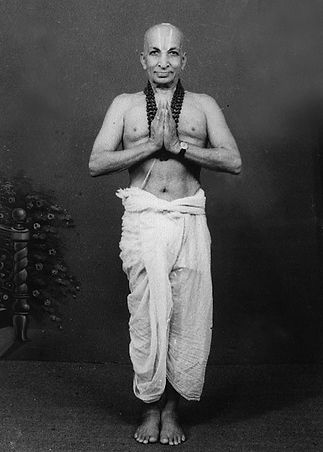
Vinyasa-Krama
This is the approach of श्री Tirumalai Krishnamacharya, the father of modern Yoga,
& presents a logical progression in the study of Yoga embracing the roots of yoga & traditional wisdom, applied in conjunction with modern science.
श्री Krishnamacharya's innovation was the concept of Vinyasa, that is the fluid dynamic linking of practices in a logical progression usually via sequence connecting breath, movement, & intention.
He emphasized a powerful physical practice as a baseline of good habits & healing particularly for the contemporary moment where physical & mental disturbances dominate our experience of life: we live in the time where the physical takes precedence.
It was his intention to offer Yoga for all in a universal way, regardless of age, culture, religion, gender, language, or conditioning as the sacred (Īśvara) manifests uniquely for each.
The 6 areas of application for Vinyasa-Krama
सृष्टिक्रम Sṛṣṭi krama:
The attention here is on the growth of physical, mental, psychological, & emotional intelligence; this is ideal for the youth.
शिक्षणक्रम Śikṣaṇa krama:
To acquire competency in the fundamental aspects of Yoga practice:
•āsana: Posture
•Prāṇāyāma: Breathwork to cultivate & balance vital energies
•Mudrā: Symbolic & mythopoeic gestures
•Bandha: Integration & binding of the interior/ exterior
•Dṛṣṭi: The gaze, points of focus, & attention
•Nidra: Proper deep relaxation
•Saṃyama: Dhāraṇā- concentration & focus, Dhyāna- meditations, & Samādhi- stabilising Yogic states
रक्षणक्रम Rakṣaṇa krama:
Here the focus is on maintaining & sustaining a wholesome way of life that enables us to carry out our responsibilities. This is especially relevant for adults with family, or demanding social & professional investments. Yoga as a means to improve the quality of life, not replace/ destroy it.
आध्यात्मिकक्रम Ādhyātmika krama:
Here we practice to discover & nourish our spiritual selves through meditation, mythopoeia, ritual, & mantra chanting.
चिकित्साक्रम Cikitsā krama:
Cikitsā denotes “therapeutic means” & here we use Yoga as an instrument of healing & sustained wellbeing. This is of interest to anyone who encounters health problems, injury, or periods necessitating healing.
शक्तीक्रम Śakti krama:
That rare & mysterious magical side of Yoga where we look to be granted special abilities, siddhi.
However, Sri Krishnamacharya advises us, “This is not so useful for society now. I will only teach you what is useful.”
श्री BNS Iyengar
A note on Ashtanga-Vinyasa as taught in mysuru by श्री BNS Iyengar
(Not to be confused with the infamous श्री BKS Iyengar)
श्री BNS Iyengar will be 98 in 2024 & continues to teach. He is truly old-
school as he teaches all 8 limbs that comprise Patañjali’s पतञ्जलि Ashtanga
Yoga.
He was a direct student of श्री Krishnamacharya & a younger contemporary
of श्री KP Jois & is affectionately known as a living legend in Mysore for his
devotion & teaching to all students, Indian or otherwise.
His view is that the physical practice is merely a support for the
breathework, mudra & meditation on the divine & should not comprise the
entirety of the practice.
He humorously exclaims, “Don’t strive for perfection! Don’t compare, do as
only much as you can & then go straight to God!”
Remember his guru, श्री Krishnamacharya, taught many sequences & many variations which BNS still honours regardless of following the structured sequences as he was taught.


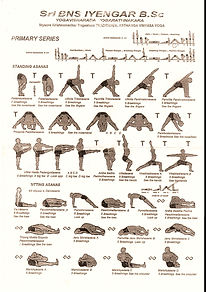
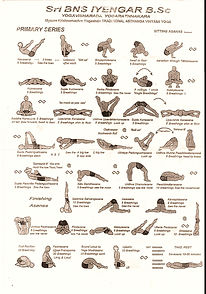

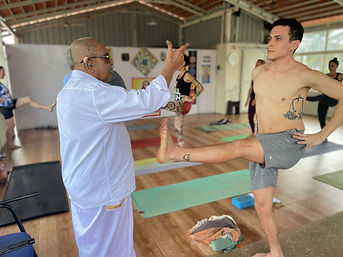
“The asanas are like scales. Once you learn the scales, you can make music.” –श्री BNS Iyengar
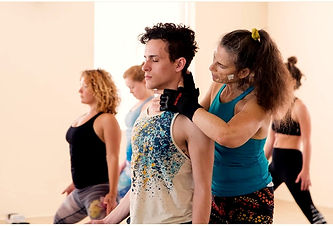
FORREST YOGA
On a different note,
in 2018 I had the honour of training with the unmatched ANA
TIGER FORREST during her advanced teacher training in Cape
Town.
The creatrix of Forrest Yoga studied beneath the great masters:
श्री BKS Iyengar, Ashtanga con श्री KP Jois, Swami Sivananda &
found sanctuary living on the indigenous reserve learning
Navajo, Cheyenne, Lakota, Lummi, Cherokee, Athabaskan
wisdom.
Forrest Yoga is an evolution of Yoga that maintains a strong
connection with the animist spirit & the medicine practitces of
the first peoples of America through which we discover a
unique primal practice that in many ways returns instictually to
Yoga’s distant shamanic & animistic prehistory.